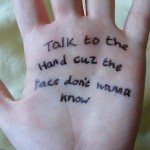 An international organization of physicians and scientists recognize smart meters are harming people’s health. They say, “The evidence is irrefutable.” and call for further research, accommodations and avoidance of smart meters. This new statement is based on a review of cases by Dr. Lamech in Australia. Here’s their recently adopted statement: Smart Meter Case Series
An international organization of physicians and scientists recognize smart meters are harming people’s health. They say, “The evidence is irrefutable.” and call for further research, accommodations and avoidance of smart meters. This new statement is based on a review of cases by Dr. Lamech in Australia. Here’s their recently adopted statement: Smart Meter Case Series
“Founded in 1965 as a non-profit medical association, the American Academy of Environmental Medicine (AAEM) is an international organization of physicians and scientists interested in the complex relationship between the environment and health.
AAEM physicians and physicians world wide are treating patients who report adverse, debilitating health effects following the installation of smart meters, which emit electromagnetic frequencies (EMF) and radiofrequencies (RF).
The peer reviewed, scientific literature demonstrates the correlation between EMF/RF exposure and neurological, cardiac, and pulmonary disease as well as reproductive disorders, immune dysfunction, cancer and other health conditions. The evidence is irrefutable. Despite this research, claims have been made that studies correlating smart meter emissions with adverse health effects do not exist.
The AAEM has received a case series submitted by Dr. Federica Lamech, MBBS, Self- Reporting of Symptom Development from Exposure to Wireless Smart Meters’ Radiofrequency Fields in Victoria. AAEM supports this research. It is a well documented 92 case series that is scientifically valid. It clearly demonstrates adverse health effects in the human population from smart meter emissions.
The symptoms reported in this case series closely correlate not only with the clinical findings of environmental physicians, but also with the scientific literature. Many of the symptoms reported including fatigue, headaches, heart palpitations, dizziness and other symptoms have been shown to be triggered by electromagnetic field exposure under double blind, placebo controlled conditions. Symptoms in this case series also correlate with the Austrian Medical Association’s Guidelines for the Diagnosis and Treatment of EMF Related Health Problems.
It is critically important to note that the data in this case series indicates that the “vast majority of cases” were not electromagnetically hypersensitive until after installation of smart meters. Dr. Lamech concludes that smart meters “may have unique characteristics that lower people’s threshold for symptom development”.
This research is the first of its kind, clearly demonstrating the correlation between smart meters and adverse health effects.
Based on the findings of this case series, AAEM calls for:
- Further research regarding smart meter health effects
- Accommodation for health considerations regarding smart meters.
- Avoidance of smart meter EMF/RF emissions based on health considerations, including the option to maintain analog meters.
- A moratorium on smart meters and implementation of safer technology
- Physicians and health care providers to consider the role of EMF and RF in the disease process, diagnosis and treatment of patients.
Passed by the Board of Directors of the American Academy of Environmental Medicine October 23, 2013
Update:
See also: Dr. Ron Powell’s “Symptoms after Exposure to Smart Meter Radiation”: http://emfsafetynetwork.org/wp-content/uploads/2010/08/Symptoms-after-Exposure-to-Smart-Meter-Radiation.pdf






